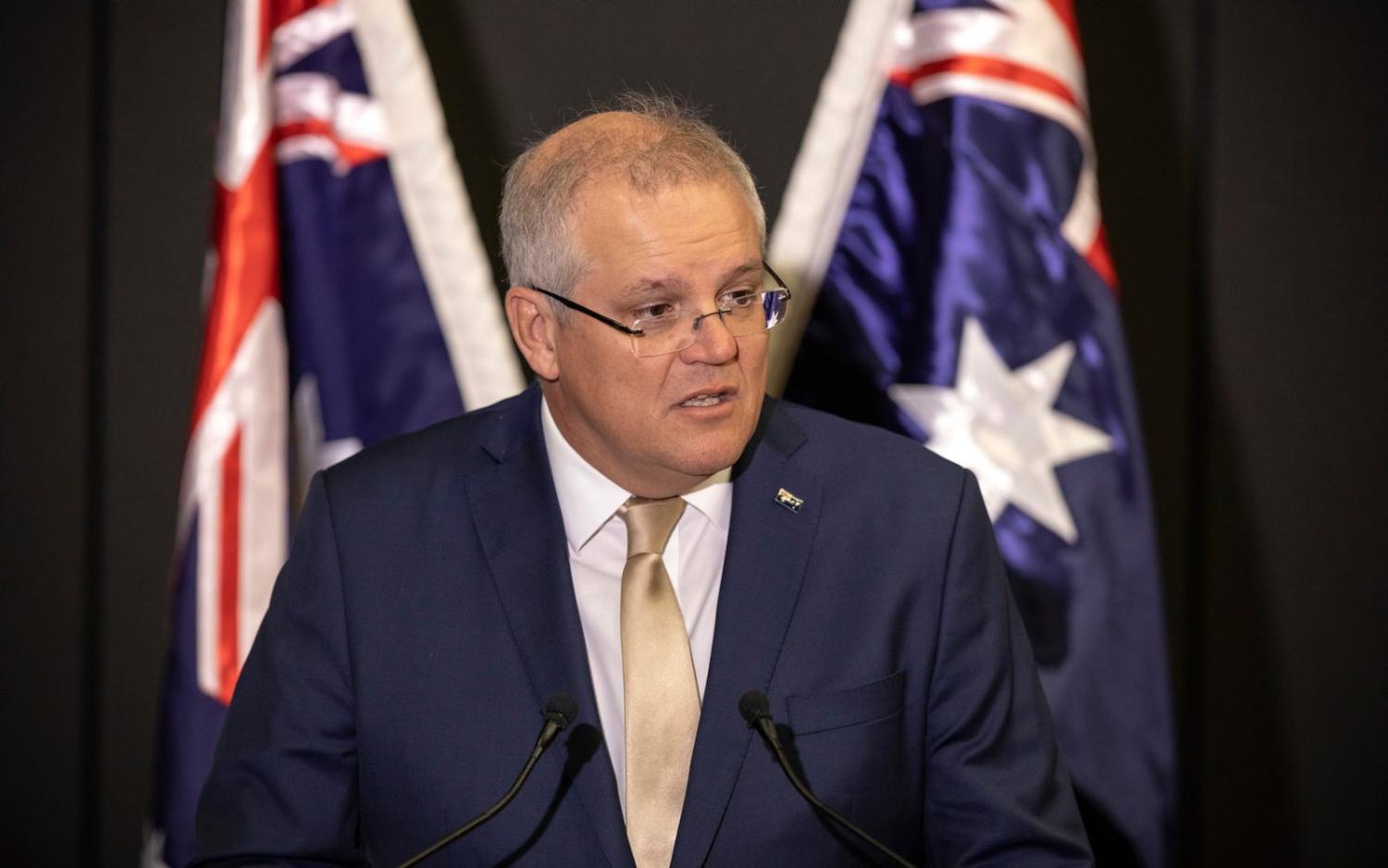The audience at this morning’s launch of the 2020 Defence Strategic Update at the Australian Defence Force Academy in Canberra was sparse. Local regulations prevent more than 100 people gathering at an indoor venue, and in such a large auditorium it was difficult to create a sense of occasion.
But Prime Minister Scott Morrison certainly had the attention of the room when he declared that Australia is entering a post-Covid world that is “poorer, more dangerous and more disorderly”. Morrison went slightly off script to dwell on a comparison with global instability in the 1930s, and then returned to that comparison at the close. It was dark and foreboding stuff.
Our region, the PM said, is far less benign than it was during the golden period between the fall of the Berlin Wall and the Global Financial Crisis. Indeed, in the government's view, things in just the last four years have deteriorated rapidly enough to prompt this revision of the 2016 Defence White Paper.
If ever a government needed an excuse to cut defence spending, Covid-19 is it. But instead it is holding the line.
So as Andrew Carr noted on Twitter, this Update is about refocusing our defence strategy towards our region, and towards doing more alone. Morrison’s speech contained the ritual genuflecting to the US alliance, but the Strategic Update can be read as the beginnings of a plan for a future in which the US will be less reliable and less resolute in defending our interests against a rising China.
No PM would ever publicly question the alliance, but it is clear that the government has been rattled by the unreliability and unpredictability of President Trump.
However, it goes deeper than that. The PM emphasises the rapid strategic changes that have taken place since the 2016 White Paper, which is overwhelmingly a judgment about China’s military rise. The government must now be calculating that, no matter who is in charge in Washington, the balance of military power is tipping decisively towards China.
The full consequence of that assessment is that Australia’s great and powerful friend is no longer in charge in our region.
Some other notable points:
Readers will see on the budget fact sheet accompanying the Update that the government is not proposing additional growth in defence spending on top of what it promised in the 2016 Defence White Paper. Rather, it is committing to maintain the spending growth promised in that document for an additional four years (to 2030 rather than 2026). That’s not nothing. If ever a government needed an excuse to cut defence spending, Covid-19 is it. But instead it is holding the line.
- The focus on long-range strike capability is concerning. The idea that Australia should be able to put adversary forces and infrastructure at risk thousands of kilometres from our shores is destabilising, as I argued here.
- If we are planning on the ability to strike Chinese territory, we can expect to get much more back in return. And that is not to mention Indonesia, which will be a huge power in its own right by the middle of the century. We need Indonesia on our side. Long-range strike is bound to cause distrust in Jakarta. If we’re going to go down that path, we should do it cooperatively with Jakarta.
- The emphasis on “having what we need, when we need it” (including in munitions and fuel supplies) is welcome, and can also be read as a shift towards greater self-reliance, even against highly capable adversaries, rather than dependence on the US.
- The PM’s reference to the future submarine project being “on time and on budget” will come as a suprise to many defence watchers, but clearly the government is in no mood to walk back its commitment to this massive project.

